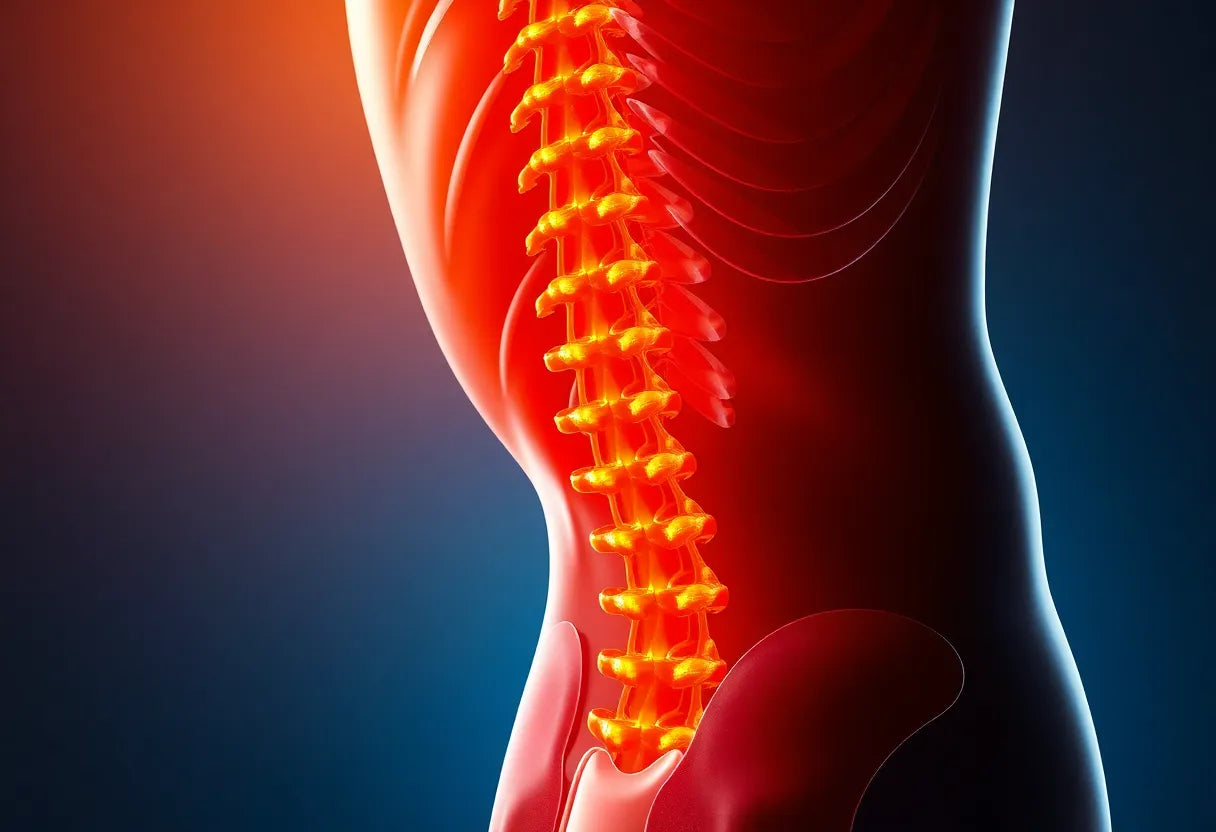Facing the prospect of neck surgery due to a herniated disc can be daunting. Understanding the condition and the role surgery plays in treatment is crucial for anyone navigating this challenging path. A herniated disc in the neck, or cervical spine, occurs when the soft center of a spinal disc pushes through a crack in the tougher exterior casing. This condition can lead to significant discomfort and impairment, affecting daily activities and overall quality of life.
Understanding herniated disc in the neck
The cervical spine is a complex structure that supports the head and allows for a wide range of motion. When a disc herniates in this area, it can compress nearby nerves, leading to symptoms such as neck pain, radiating arm pain, numbness, and muscle weakness. These symptoms can severely impact daily life, making even simple tasks challenging. For many, the pain and discomfort are manageable with conservative treatments like physical therapy, medication, or lifestyle modifications. However, when these approaches fail to provide relief, or if the condition progresses, surgical intervention may become necessary.
The role of surgery in treating herniated discs
Neck surgery for a herniated disc is considered when non-surgical treatments do not alleviate symptoms or if neurological deficits worsen. Surgery aims to relieve pressure on the nerves, reduce pain, and restore function. The decision to proceed with surgery involves careful consideration of the severity of symptoms, the impact on quality of life, and the potential benefits and risks of the procedure. It's a decision made collaboratively between the patient and their healthcare provider, ensuring that the chosen path aligns with the patient's health goals and lifestyle needs.
What to expect if you're facing neck surgery for a herniated disc
If you're contemplating neck surgery for a herniated disc, you might wonder what the journey entails. Understanding the surgical options, recovery process, and long-term outcomes can help alleviate anxiety and prepare you for the road ahead. In the next sections, we will explore the various surgical techniques available, their clinical efficacy, and what patients can expect during recovery. This comprehensive guide aims to equip you with the knowledge needed to make informed decisions about your health and well-being.
surgical options for herniated disc in the neck
When conservative treatments for a herniated disc in the neck fail, surgical intervention becomes a viable option. There are several surgical techniques available, each with its advantages and considerations. The most common procedures include Anterior Cervical Discectomy and Fusion (ACDF), percutaneous full-endoscopic surgery, and artificial disc replacement.
Anterior Cervical Discectomy and Fusion (ACDF): This traditional surgical method involves removing the herniated disc and fusing the adjacent vertebrae to stabilize the spine. ACDF is a well-established procedure known for its effectiveness in relieving pain and restoring function. However, it may limit some neck mobility due to the fusion.
Percutaneous Full-Endoscopic Surgery: This minimally invasive technique uses small incisions and an endoscope to remove the herniated disc. It offers the advantage of shorter recovery times and less postoperative pain compared to traditional methods. Patients undergoing endoscopic surgery often resume eating within 8.3 hours post-surgery, significantly faster than the 26.5 hours for those undergoing ACDF.
Artificial Disc Replacement: This procedure involves replacing the damaged disc with an artificial one, allowing for preserved motion in the cervical spine. It is an attractive option for those who wish to maintain neck flexibility. However, not all patients are suitable candidates for this procedure, and thorough evaluation is necessary.
clinical efficacy and recovery
Understanding the clinical efficacy and recovery expectations is crucial for patients considering neck surgery for a herniated disc. Recent studies provide valuable insights into the outcomes of different surgical approaches. For instance, percutaneous full-endoscopic surgery is associated with shorter hospital stays, averaging 6.4 days compared to 8.2 days for traditional ACDF. Additionally, patients report high rates of symptom improvement and reduced complications with minimally invasive techniques.
The success of surgical intervention is often measured by metrics such as pain relief, neurological function improvement, and overall patient satisfaction. Data indicates that over 95% of patients experience significant symptom relief post-surgery, with minimal complications reported. Nevertheless, individual outcomes can vary based on factors like patient health, the severity of herniation, and the expertise of the surgeon.
patient-centric considerations in neck surgery
Patient-centric considerations play a vital role in the success of neck surgery for a herniated disc. Factors such as the patient's overall health, the severity of the herniation, and the surgeon's skill and experience can significantly influence surgical outcomes. It is essential for patients to be well-informed about the surgical process and recovery expectations.
Educating patients about the various surgical options, potential risks, and expected recovery timelines is crucial for informed decision-making. Patients should engage in open discussions with their healthcare providers to ensure that their treatment plan aligns with their personal health goals and lifestyle needs. This collaborative approach empowers patients to make choices that best suit their circumstances and enhances the likelihood of successful outcomes.
visual aid: comparing recovery metrics
To provide a clearer understanding of recovery outcomes, a comparison of key metrics for different surgical techniques is beneficial. Here is a table summarizing recovery times and patient improvement rates:
| Surgical Technique | Average Recovery Time (Eating) | Hospital Stay (Days) | Patient Improvement Rate |
|---|---|---|---|
| Anterior Cervical Discectomy and Fusion (ACDF) | 26.5 hours | 8.2 days | 95%+ |
| Percutaneous Full-Endoscopic Surgery | 8.3 hours | 6.4 days | 95%+ |
| Artificial Disc Replacement | Variable | Variable | 95%+ |
This table highlights the advantages of minimally invasive techniques, particularly in terms of faster recovery times and shorter hospital stays, underscoring their growing popularity among patients and surgeons alike.
Post-surgical recovery and ergonomic support
Recovering from neck surgery for a herniated disc is a journey that involves more than just healing the surgical site. Ergonomic support plays a crucial role in facilitating recovery and ensuring long-term success. Post-surgery, patients are often advised to use neck braces to stabilize the cervical spine, reducing strain and promoting proper alignment during the healing process. Additionally, ergonomic pillows can provide necessary support during sleep, helping to alleviate discomfort and maintain correct posture.

Women's Posture Shirt™ - Black
Supports and stimulates muscles to relieve pain and improve posture. CE-registered medic device for all-day comfort.

Men's Posture Shirt™ - Black
Improves posture and relieves pain through patented NeuroBand™ tech; suitable for work and leisure.
Beyond immediate recovery, integrating ergonomic adjustments into daily life is essential to prevent recurrence of herniated discs. This includes setting up an ergonomic workspace with adjustable chairs and desks, ensuring that the computer screen is at eye level, and using footrests to maintain proper posture. Regular breaks and exercises to strengthen neck and shoulder muscles are also vital components of a comprehensive recovery plan.
Preventive and supportive measures
While surgery can be an effective solution for severe cases, preventive measures and supportive non-surgical interventions remain invaluable. Physical therapy is a cornerstone of conservative management, focusing on exercises that enhance flexibility, strengthen muscles, and improve posture. These therapies are designed not only to alleviate symptoms but also to prevent further deterioration of the cervical spine.
For individuals recovering from neck surgery, workplace ergonomics must be prioritized to support ongoing recovery and prevent future issues. Employers and employees alike should consider ergonomic assessments to optimize work environments, reducing the risk of strain and injury. Simple changes, such as using standing desks or ergonomic keyboards, can make a significant difference in maintaining spinal health.
Conclusion
Navigating neck surgery for a herniated disc involves understanding the condition, exploring surgical and non-surgical options, and committing to a recovery plan that includes ergonomic support. Each patient’s journey is unique, and while surgery can offer relief and restore function, the importance of preventive measures and lifestyle modifications cannot be overstated. Consulting with healthcare professionals is crucial for personalized advice tailored to individual needs and circumstances.
Frequently Asked Questions
What is the success rate of neck surgery for herniated discs?
Neck surgery for herniated discs has a high success rate, with over 95% of patients experiencing significant improvement in symptoms. Complication rates are generally low, making it a viable option for those who do not respond to conservative treatments.
How long does it take to recover from neck surgery?
Recovery times can vary based on the type of surgery performed. For example, patients undergoing percutaneous full-endoscopic surgery typically experience shorter recovery times, with most resuming normal activities within a few weeks. Factors such as overall health and adherence to post-operative care can also influence recovery duration.
Are there non-surgical options for treating a herniated disc in the neck?
Yes, non-surgical options include physical therapy, medications, and lifestyle modifications such as ergonomic adjustments. These interventions aim to manage symptoms and improve quality of life without the need for surgery.
What are the risks associated with neck surgery?
While neck surgery is generally safe, potential risks include infection, bleeding, nerve damage, and complications related to anesthesia. Surgeons take precautions to minimize these risks, and patients are advised to discuss concerns with their healthcare provider.
How can ergonomic aids help after neck surgery?
Ergonomic aids, such as neck braces and ergonomic pillows, support recovery by promoting proper alignment and reducing strain on the cervical spine. These tools, along with ergonomic workspace adjustments, play a vital role in preventing future issues and enhancing overall recovery.
Källor
- Hospital for Special Surgery. ”ACDF Surgery.”
- Spine-health. ”Spine Surgery for a Cervical Herniated Disc.”
- Houston Spine Surgeon. ”Anterior Cervical Discectomy with Fusion.”
- Cleveland Clinic. ”ACDF Surgery.”
- PubMed Central. ”Clinical Outcomes of Cervical Disc Surgery.”
- Mayo Clinic. ”Herniated Disk: Symptoms and Causes.”
- Mayfield Clinic. ”Herniated Cervical Disc.”


















